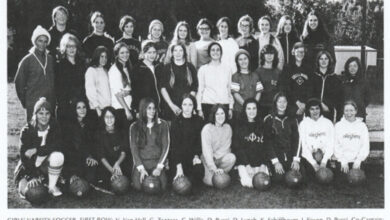Neophytes on ice

Well, my first attempt at ice fishing was a bust. For some reason the hockey players at Lakeshore Rinks kept yelling and skating up to me, stopping fast and giving me a shaved ice spray in the face while I was trying to fish. That coupled with the fact that I kept getting my lure snagged on the pipes under the ice, I gave up.
Not discouraged, I decided to try fishing outdoors and headed for Sodus Bay, the reported ice fishing hot spot for perch in the area. After recruiting Jim Miller, the “Perch Punisher” to join me, we headed east. Jim is a veteran perch fisherman but hasn’t ice fished in many years. He showed up with some equipment that he must have bought from Ben Franklin. We are talking a metal minnow bucket and wood ice fishing poles. I don’t think they’ve made a metal minnow bucket since the invention of plastic.
Thanks to YouTube I had a good idea that this equipment was outdated and bought a couple of ice fishing poles and spooled them with four pound test line and a plastic minnow bucket. I knew that it was important to use very light pound test line when fishing in the winter. The fish in cold-water bite extremely light and won’t bite on the conventional fishing baits and lures that you would use in the summer. For example, they won’t touch a worm at this time of year. Baits, hooks and jigs must be as small as possible, but still heavy enough to get to the bottom.
We stopped in at Bay Bridge Sport Shop in North Rose where we bought some wax worms and a couple dozen minnows. They also gave us the latest information: “The perch are in deep water and you must start in at least thirty feet of water to catch the bigger fish.” They gave us directions to Shaker Track Road, which runs close to the bay and allows parking. When I asked where to go from there, they just laughed and told us that we would see huts. They weren’t kidding. When we got close to the bay, we couldn’t believe what we saw. The road was lined with hundreds of trucks and cars and we saw hundreds of portable ice fishing huts sprinkled all across the bay as far as you could see.
The first thing that struck me was that the ice has to be safe with all these people on it, and my paranoia of falling through quickly vanished. Some of the ice fishermen who were coming back in from the morning bite were friendly and forthcoming with information. I asked how thick the ice was and they replied that it was 18 inches … thick enough to drive a truck on. Though I assumed that was illegal as I saw no cars or trucks on the ice, but plenty of ATV’s and snowmobiles running around. We walked out on a path where literally hundreds of ice fishermen had already walked out that morning. We did know enough to pick a nice day with the temperatures in the mid-thirties and no wind. Wind can be a major factor on how cold you will get out there. Just a light breeze on shore will feel like a major wind once you’re out on the wide-open ice.
The first problem we encountered was how slick the ice was. I noticed all the fishermen out there had spikes on their boots and we soon found out why. We were slipping and sliding all the way out. Luckily, the ice had some crust on it and we were able to get some traction. I could see that if you got there after a thaw and refreeze when the ice was smooth you wouldn’t be able to walk on it without falling.
After seeing all those parked vehicles, I figured it would be crowded on the ice but once we got out there was plenty of room. Most fishermen were at least one hundred yards apart. We walked/slid about a half a mile out, passing several huts where we asked how deep the water was. Eventually we got a reply of “thirty feet!” and decided that this was as good a spot as any.
Miller’s auger was from post-World War I era and I got tired just watching him struggle to drill through the 18 inches. We had the worst equipment of anybody on the ice. As I looked around I noted that most anglers were in portable ice huts and had drill bit-type hand augers, some gas powered. The latest and greatest augers were powered by 12-volt drills.
Jim managed to hack out a couple holes and we pulled up our five-gallon pails for seats, putting a few wax worms on the hooks of our tiny spoons and dropping them down. One other key tool is an ice scoop to keep the ice shavings out of your hole. The scoop Miller had came over on the Mayflower and had three layers of rust on it, but it did the trick.
True to his name, the Perch Punisher had a perch on within one minute. It was small but a keeper in his book … not mine. We both started to catch perch at a steady pace. About one out of three were big enough to fillet. We fished for about four hours and ended up catching over a hundred perch. Of those, we kept 59. Some were Miller-sized keepers (one stripers), but most were decent eight to ten-inch fish. We stayed warm for the most part except for my hands, as they got wet while handling fish and wet will soon mean cold in this environment
My first trip on real ice was a success. I learned a lot and will return next time much better equipped.
So now that I have finally ice fished, I regret not trying it sooner. I can see that it is a great way to beat the winter blahs and help make it through the evil months. Go give it a try. I think you will agree it’s nowhere near as difficult, cold or dangerous as you would think as long as you dress warm and travel where others have gone before you.





